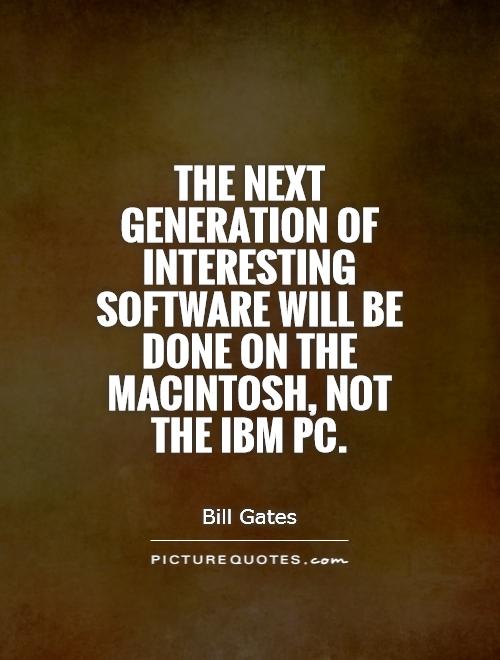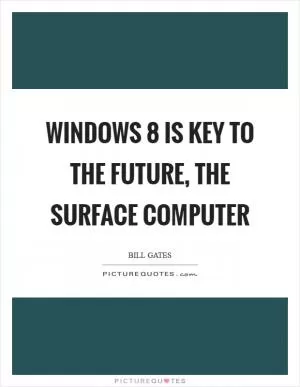The next generation of interesting software will be done on the Macintosh, not the IBM PC

The next generation of interesting software will be done on the Macintosh, not the IBM PC
In the early days of personal computing, Bill Gates famously declared that "The next generation of interesting software will be done on the Macintosh, not the IBM PC." This statement, made in the mid-1980s, was a bold prediction at the time, as the IBM PC was the dominant platform in the industry. However, Gates' foresight and understanding of the potential of the Macintosh platform proved to be prescient, as the Macintosh would go on to become a major player in the world of software development.One of the key reasons why Gates believed that the Macintosh would be the platform of choice for the next generation of software development was its superior user interface. The Macintosh was the first personal computer to feature a graphical user interface, which made it much easier for developers to create visually appealing and intuitive software. This was in stark contrast to the IBM PC, which relied on a text-based interface that was less user-friendly and more difficult to work with.
Another factor that contributed to Gates' belief in the Macintosh as the future of software development was its innovative hardware design. The Macintosh was the first personal computer to feature a built-in mouse and a graphical display, which made it much easier for developers to interact with their software and create more sophisticated applications. In addition, the Macintosh's compact design and all-in-one form factor made it a more attractive option for developers who wanted a powerful and versatile platform that was also easy to use.
Furthermore, Gates recognized the potential of the Macintosh as a platform for multimedia and creative software development. The Macintosh's superior graphics capabilities and support for color displays made it an ideal platform for developers who wanted to create visually stunning and interactive applications. This was in contrast to the IBM PC, which was primarily used for business and productivity software and lacked the multimedia capabilities of the Macintosh.












 Friendship Quotes
Friendship Quotes Love Quotes
Love Quotes Life Quotes
Life Quotes Funny Quotes
Funny Quotes Motivational Quotes
Motivational Quotes Inspirational Quotes
Inspirational Quotes